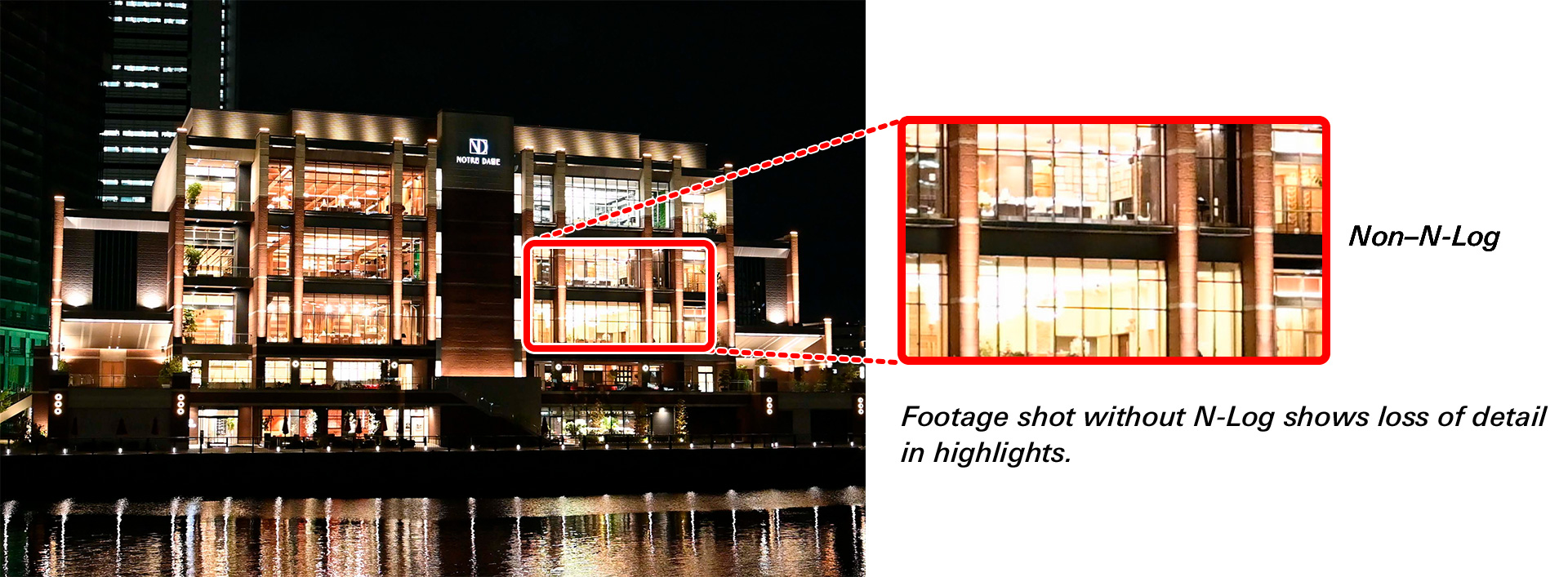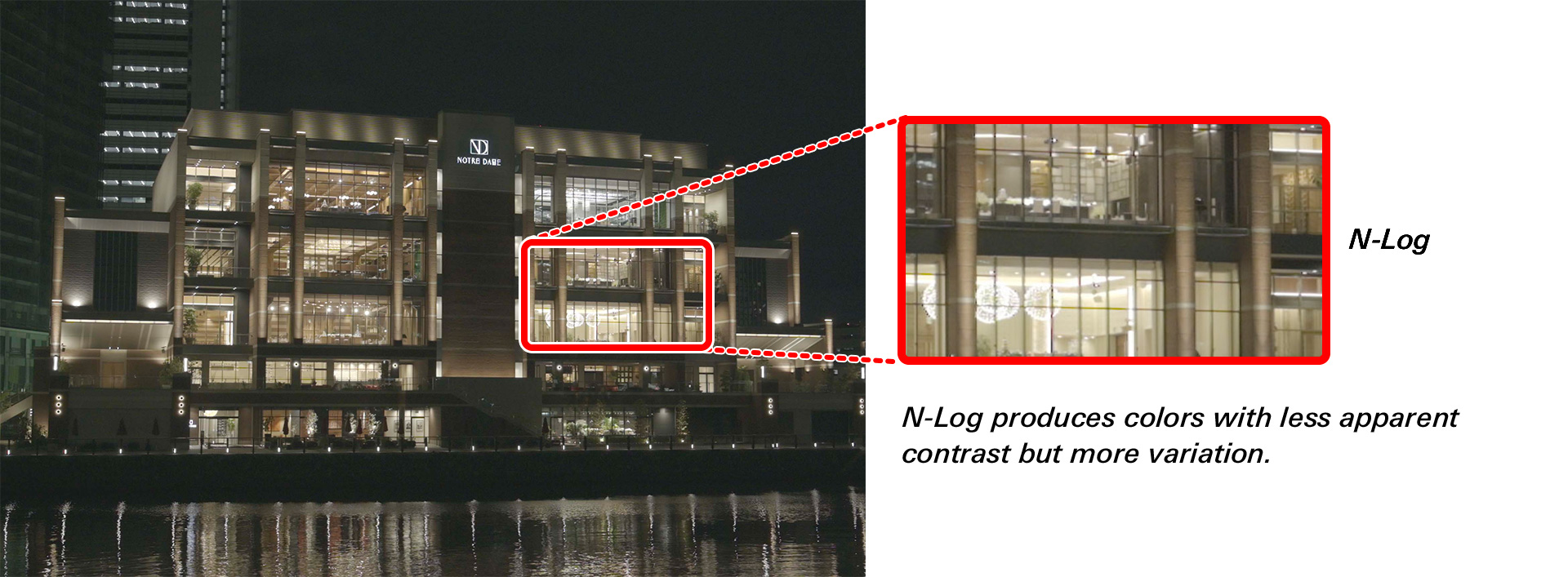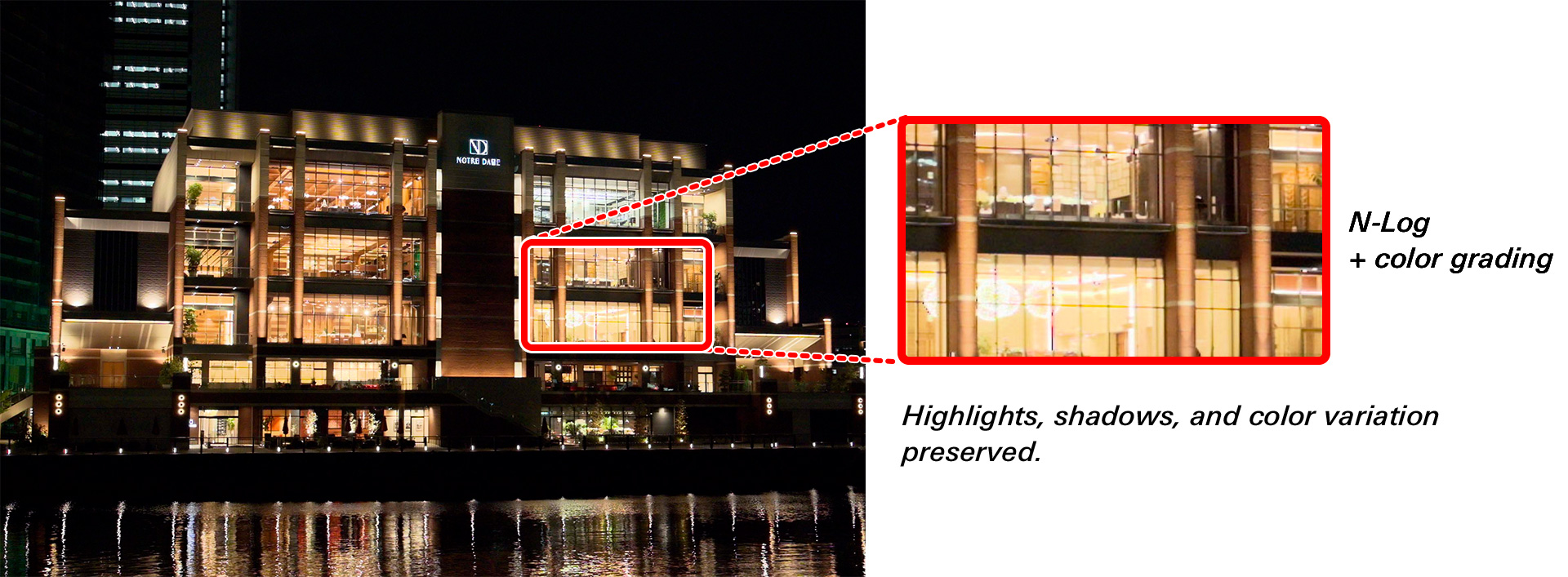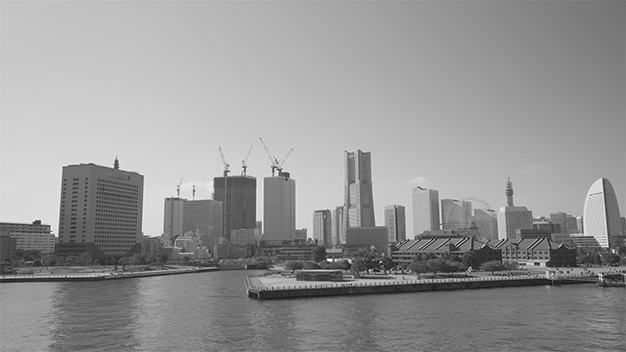The term “N-Log” is an amalgam of “N”, for “Nikon”, and “log”, short for “logarithmic function”. The logarithmic function in question is that used in digitizing light levels based on the density characteristics of negative film to render exposure differences much as humans perceive them. This is known as a “log curve”.
The process of filming movies using a log curve is referred to as “logarithmic” or “log-format” recording. Log format recording preserves highlights and shadows in scenes in which they would otherwise be lost and is intended for footage that will be processed post-production, when color grading can be used to produce high-quality video with a wide color gamut that takes advantage of the large amount of tone information available for an expanded dynamic range and smooth color gradients.
Nikon's unique N-Log format was developed to take full advantage of sensor dynamic range. It offers excellent balance between highlights and shadows and is optimized for 10-bit movie recording.
Shooting in N-Log format preserves details in highlights and shadows and expands the range of effects available through color grading.
N-Log preserves highlights and shadows in high-contrast shots, such as those that mix indoor and outdoor lighting.



Third-party movie-editing software that supports color grading can be used to process the same footage in a variety of different ways, as is shown in the examples below.

No color grading




